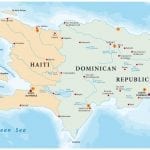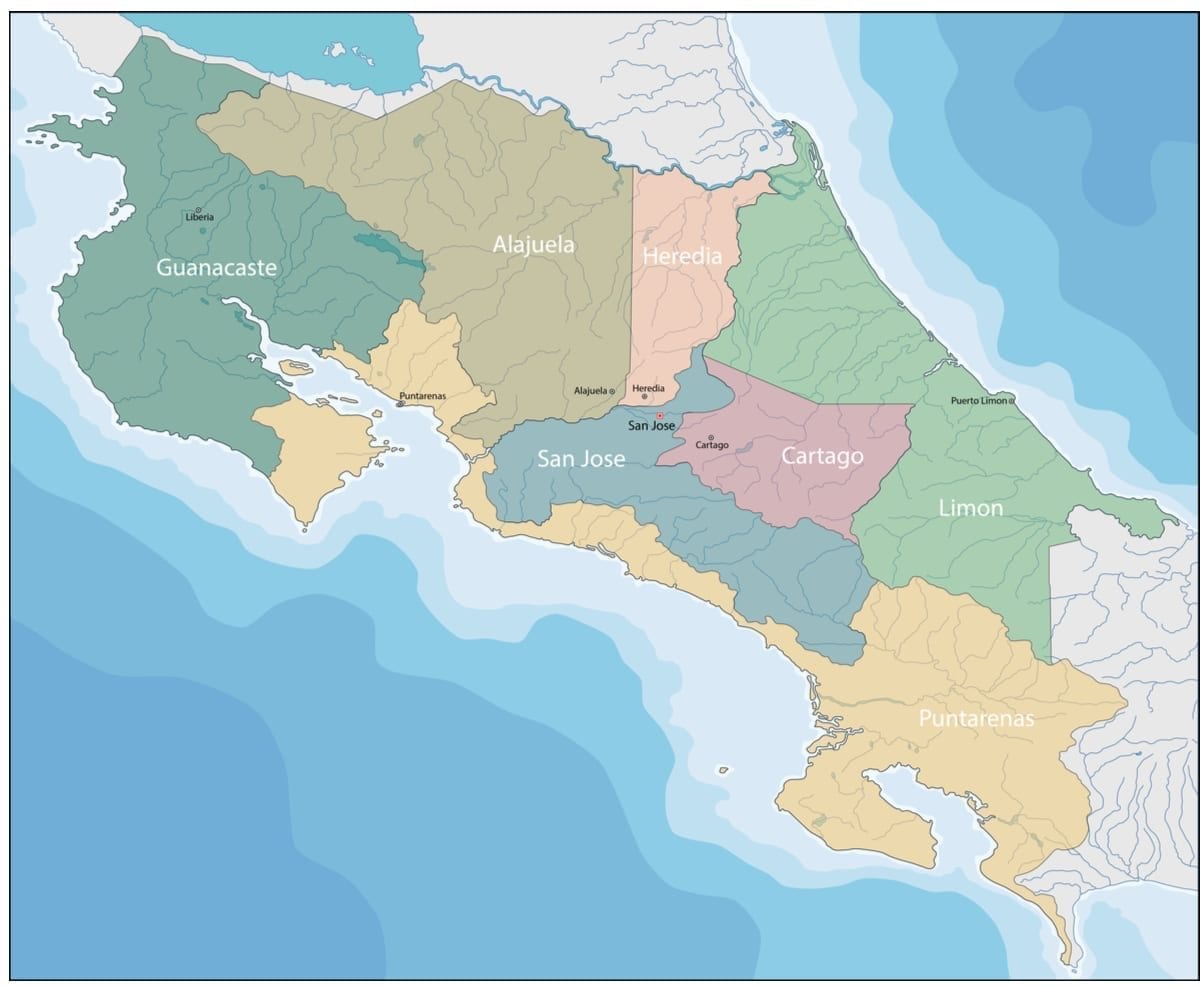
Most of you are familiar only with its dark side, the crime, the violence, the poverty, the unrest, etc. You know what! There is more to Haiti than just that. Though the country has gone through alarming situations year after year and there have been natural as well as political disasters, still, there are a lot more unexplored portions in Haiti that you would love to find out about. In this article, we are going to bring to the table some interesting facts about Haiti regarding its map and location, population, language, flag and enchanting sites. Stay tuned and be with us throughout this virtual journey.
Map of Haiti
Where is Haiti located on the map?
Haiti on the world map is in the Greater Antilles archipelago of Caribbean islands situated in the West Indies zone of North America covering one-third portion of Hispaniola Island. The eastern lands are bordered with the Republic of Dominica. It embraces sea waters at the western and the southern shores. Cuba in the northwest and Jamaica in the southwest are separated from Haiti by the Caribbean. To the northeast are the Turks and Caicos Islands. For more details, look at Haiti’s map attached above.
Haiti population growth rate
Second, only to Cuba, Haiti is the most populated country of the entire Caribbean belt. At present, it holds about 11,423,872 people. It takes around 0.15% of the global population. The official data issued as per UN statistics enlists Haiti at 82nd rank among worldwide countries and dependencies. The terrestrial area stretches across 27,560 square kilometers, whereas the population density is 414 people per square km. Median age is 24 years, and near about 57% of Haitians reside in urban areas. The yearly percentage change in population has reduced in the last ten years, i.e., from 1.59% in 2010 to 1.24% in 2020.
What is the main religion in Haiti?
The country does not cling to a specific religious group. However, the majority of people are Catholics. Others include Baptists, Pentecostals and atheists.
Haitian food facts
A blend of tradition and modern influences, Haitian food is famous for its spicy cuisine. Some delicious dishes include Diri ak Pwa, Rice and Beans, Lobster, Fried Pork, and Pumpkin Soup.
Haitian creole vs french
For all the formal proceedings from parliament to schools, the official language is French. Along with it, Haitian Creole is also officially privileged, but in fact, Creole is regarded as an inferior language. French is the standard written language, whereas Creole exists only in conversations. Despite the prejudice, a higher majority (about 95%) speaks Creole, and only about 5% of Haitians are fluent in French. Creole has three different dialects, the Central dialect, Southern dialect, and Northern dialect. Other languages include English and Spanish.
Haiti Flag Picture and History

The bicolour horizontal stripes, blue being at the top and red at the bottom, with a central emblem of Haiti coat of arms imprinted inside a white rectangle, Haiti flag has an intelligent pattern. The coat of arms comprises a green mount with so many weapons such as rifles, hatchets, cannon, anchors and other artillery mounted at the peak around a palm tree. A white band at the very base has the motto, L’Union fait la Force, Unity makes strength. The palm tree also has a liberty cap at its top.
Haitian flag history dates to the French Revolution and Slaves Revolt against the French empire in the land. There have been many alterations in the pattern over the years. The present flag was created in 1806 and received its recent legislation in 2012. Haiti is one of the four nations having firearms in their national flags.
Haitian Flag colors meaning
There are two notions regarding the symbolism of Haitian flag colours. First one says the red denotes the local community from an African background and the blue is for mulattoes, having mixed afro-euro ancestry. The coat of arms shows the bravery and courage of the country to secure its borders. The cap and the palm tree manifest freedom and independence. However, the other explanation claims that red and blue are the colours of Vodou god of war and the coat of arms also include the symbols relating with voodoo religion. Since Jean-Jacques Dessalines, the man who created the Haiti flag, was in Vodun temple he incorporated these colours.
Haitian flag day meaning- what is Haitian flag day?
On May 18, Haitians in Haiti and all over the world wherever they live, celebrate their flag day. Haitian flag day is a homage to the forefathers of the nation who stood against colonial rule and led the freedom fights. On May 18, 1803, Jean-Jacques Dessalines, tore off the white portion from French tricolour flag and combined the red and blue parts as to represent the local communities. Her granddaughter, Catherine Flon, sewed red and blue bands together thereby creating a new flag. Haitians wave their flag and hold patriotic festivals to commemorate the legends from the past. The day is also celebrated in the United States.
Haiti famous landmarks- What is it like in Haiti?
From mountains to beaches, caves to historic cities, Haiti tourist attractions are yet to be adored. Since the country was hit by a major earthquake there has been much destruction, but most spots are still preserved and offer a refreshing experience. Renowned sites are Citadelle la Ferrière, a mountaintop fortress, and the nearby ruins of Sans-Souci Palace.
Should I visit Haiti? Is Haiti safe?
Concerning the high crime rate, travelling to Haiti is not as safe as other islands. Make sure you follow the recommended precautions by travel advisory as to avoid any mishap.
Facts about Haiti
Key things to know about Haiti are:
- It is the only country where slaves paved the way to revolution and freedom.
- From 1804 to 1915, about seventy dictators ruled here.
- In 2010, an earthquake hit the land leaving 15 million people homeless with 300,000 casualties. The buildings of Port au Prince, Haiti capital, received massive destruction.
- Haitian culture is a conjunction of multiple races, Taino being natives, European invaders as Spanish and French and Africans.
- Haiti’s climate is usually hot, and the temperature remains almost the same in terms of degrees with only minute variations.
BOOK HOTEL IN ANY PART OF HAITI AT GREAT PRICES







